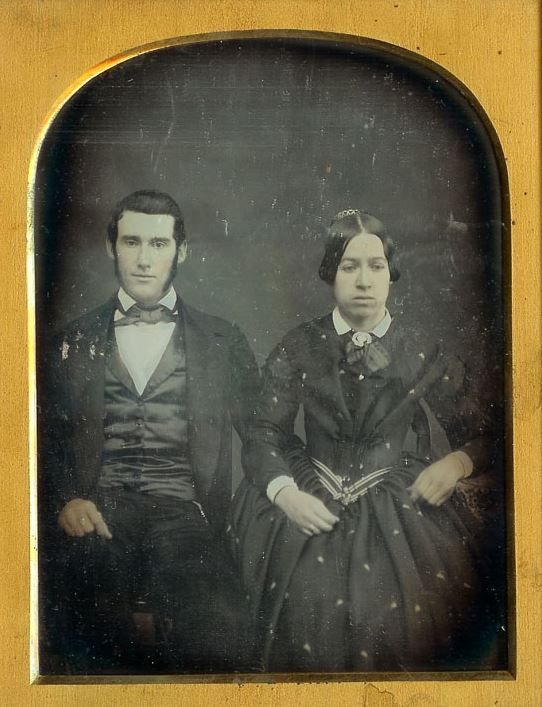
Why
are people in Nineteenth Century photos usually grimacing? This
newlywed couple looks like they've just been sentenced to hard labor.
American author Mark Twain explains their expression:
A photograph is a most important document, and there is nothing more damning to go down to posterity than a silly, foolish smile caught and fixed forever.
Twain wasn't alone. He supported a traditional though fading belief that smiling made you look stupid. The Atlantic cites scholar Nicholas Jeeves:
Twain wasn’t the only believer in the idiocy of the style. Look back at painted portraiture — the tradition photography inherited — and you’ll rarely see a grinning subject. This is, in fact, Jeeves’s subject. “By the 17th century in Europe,“ he writes, “it was a well-established fact that the only people who smiled broadly, in life and in art, were the poor, the lewd, the drunk, the innocent, and the entertainment.”
Indeed, not only were smiles of the middling sort, they breached propriety. In 1703, one French writer lamented “people who raise their upper lip so high… that their teeth are almost entirely visible.” Not only was this discourteous, he asked: Why do it at all? After all, “nature gave us lips to conceal them.”
Portraits represented an ideal. It’s easy to mock them — they were the profile pictures of the aristocracy, in a sort of way — but they were crucial, tied to mortality, a method of preserving a person’s visage and affect. Jeeves puts it well: “The ambition [with portraiture] was not to capture a moment, but a moral certainty.” Subjects never looked exactly like their picture, yet their portraits were how they appeared. Portraits had permanence. You did not want to commit a permanent faux pas.

No comments:
Post a Comment